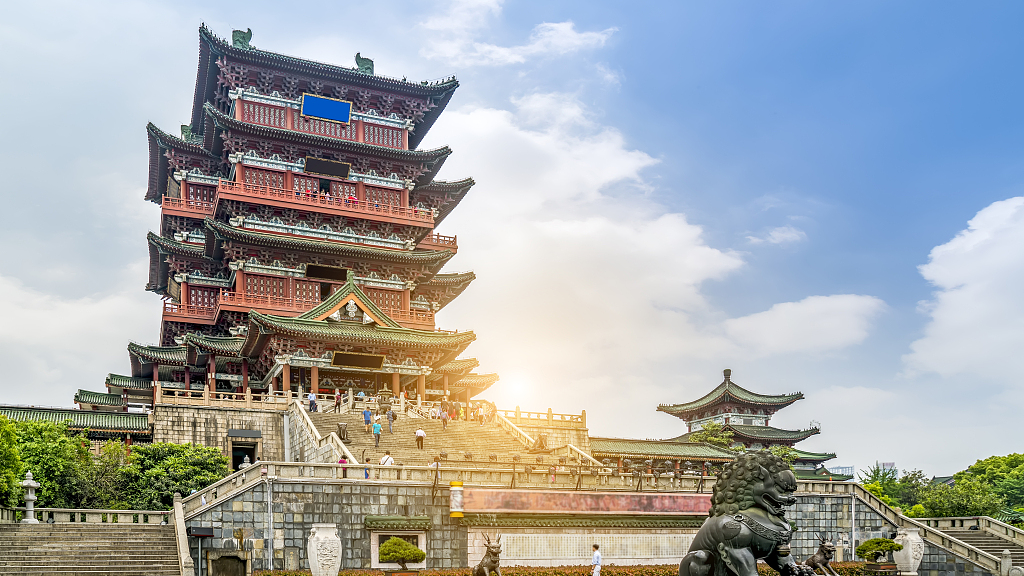Jiangxi Province, located in southeastern China, holds a rich and layered history shaped by its geography, cultural development, and pivotal role in China’s political and military evolution. Known for its lush landscapes, including the Gan River that traverses the province and serves as a vital waterway, Jiangxi has been a cradle of Chinese civilization, a battlefield for military conflicts, and a hub for revolutionary activity.

Jiangxi’s history dates back to the Neolithic period, with evidence of early human settlement found in the region. During the Shang Dynasty (1600–1046 BCE), Jiangxi was part of the southern frontier, known as Gan, a name derived from the Gan River. This period marked the beginning of agricultural and societal development in the region, with rice cultivation taking root.
Under the Qin Dynasty (221–206 BCE), Jiangxi was formally incorporated into the Chinese empire. The construction of transportation networks, such as canals and roads, linked Jiangxi with the economic heartland of northern China, integrating the province into the burgeoning imperial trade network.
During the Tang (618–907 CE) and Song (960–1279 CE) dynasties, Jiangxi flourished economically and culturally. It became renowned for its porcelain production, particularly in Jingdezhen, often referred to as the “Porcelain Capital of the World.” The province also produced some of China’s most famous poets, such as Tao Yuanming and Huang Tingjian, whose works emphasized nature and rural life, reflecting Jiangxi’s serene landscapes.
Nanchang, the capital of Jiangxi Province, has a history dating back over 2,200 years. During the Tang Dynasty (618–907), the city was known as Hongzhou (洪州). This name reflected its importance as a regional administrative center and its proximity to the Gan River, which played a vital role in trade and transportation.
Hongzhou thrived during the Tang and Song Dynasties as a hub of commerce and culture. The city’s strategic location connected it to major economic regions, including the Yangtze River Delta and southeastern China. The transition from Hongzhou to Nanchang occurred during the Song Dynasty, with the name “Nanchang” meaning “southern prosperity,” emphasizing its importance as a gateway to the southern regions.
Under the Yuan Dynasty (1271–1368), Jiangxi’s strategic location made it a crucial region for controlling southern China. However, it also became a site of rebellion. In the late Yuan period, the Red Turban Rebellion (1351–1368) swept through Jiangxi, as part of a larger uprising against Mongol rule. Zhu Yuanzhang, the future founder of the Ming Dynasty (1368–1644), consolidated his power in the region during this time.
Yue Fei was born in Tangyin County, Henan Province, in 1103 during the Northern Song Dynasty. However, after the Jin invasions and the subsequent instability in northern China, many families, including Yue Fei’s extended relatives, moved southward. Historical records and local traditions suggest that Yue Fei’s family sought refuge in Guangji (modern-day Wuxue) in Hubei. This city is located along the Yangtze River, making it a strategically significant location during the time of war. It is believed that some of Yue Fei’s relatives or descendants later relocated to Jiujiang, a city in northern Jiangxi. This area was a key part of the Southern Song’s southern territories and close to the Gan River, a critical waterway for trade and military movements. The proximity of Jiujiang to Wuxue along the Yangtze River corridor likely facilitated such connections.
During the Ming era, Jiangxi played an important role as an agricultural and commercial hub. The province’s fertile plains supported rice production, which helped sustain the growing population and contributed to Jiangxi’s prosperity. Jiangxi was one of the Ming Dynasty’s most agriculturally productive regions, thanks to its fertile plains and extensive waterways, including the Gan River and Poyang Lake. These natural resources supported abundant rice cultivation, which helped feed China’s growing population and fueled economic development. The province also excelled in tea production, ceramics, and textiles. The city of Jingdezhen, in particular, became renowned as the world’s premier center for porcelain manufacturing during the Ming period. Nanchang became a hub of education, with academies and schools fostering intellectual growth.Nanchang played a strategic military role during the Ming Dynasty.
Its location near the Yangtze River and its proximity to southern provinces made it an essential defense point against potential uprisings and external threats. One significant event was the Prince of Ning Rebellion (1519), led by Zhu Chenhao, a Ming prince who sought to overthrow the reigning emperor, Zhu Houzhao (Emperor Zhengde). Zhu Chenhao established his base in Nanchang and attempted to rally support for his cause. However, his rebellion was quickly suppressed by Ming loyalist forces. The rebellion underscored Nanchang’s importance as a military and political center.
In the Qing Dynasty (1644–1912), Jiangxi faced several military conflicts. The Taiping Rebellion (1850–1864), one of the deadliest civil wars in history, significantly affected Jiangxi. The province was a battleground for clashes between Qing forces and the Taiping Heavenly Kingdom, a millenarian movement that sought to overthrow the Qing dynasty. The conflict devastated the region, leading to population decline and economic disruption.
Jiangxi’s modern history is intertwined with China’s revolutionary narrative. In the early 20th century, it became a stronghold for the Communist Party of China (CPC). The Nanchang Uprising in 1927, led by Zhou Enlai and He Long, marked the first significant military action by the CPC against the Nationalist government, establishing Nanchang as the birthplace of the People’s Liberation Army (PLA).
The Jinggang Mountains, located in Jiangxi, were instrumental during the formative years of the CPC. In 1927, Mao Zedong and Zhu De established a revolutionary base in the mountains, laying the foundation for the Red Army. This period, often called the “Jinggangshan Era,” was crucial for the development of guerrilla warfare tactics that the CPC later used effectively.
Jiangxi also witnessed the start of the Long March (1934–1935), a strategic retreat by the Red Army to evade encirclement by Nationalist forces. The Long March began from the Ruijin base in southern Jiangxi, a pivotal event that solidified Mao’s leadership within the CPC and became a defining moment in Chinese revolutionary history.
